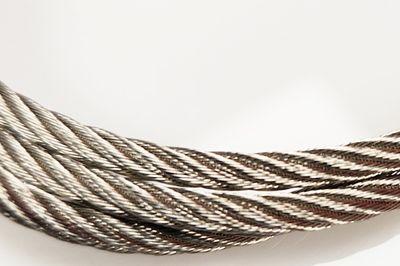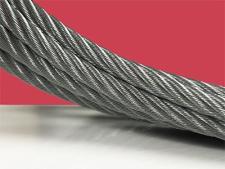What Is Steel Cable?
Steel cable is cable made from stranded steel wires. While the terminology changes, depending upon the diameter of the cable, steel wires helically stranded together can be known as wire rope, mechanical cable, miniature cable, and even ultrafine cable.
But before discussing what types of steel comprise steel cable, and there are many, it is important to understand that steel cables are not always considered “cable.” Depending upon the size of the steel cable, even what it’s called changes.
To highlight the distinctions in cable terms, have a look at the table below. Note that the term “wire rope,” which is the most commonly used idiom for steel cable, represents cable that is at least 3/8” in diameter. Conversely, cable dubbed, “ultrafine” represents cable that uses wires ranging from 1/32nd - 1/16th of an inch. Even more interesting is that in the ultrafine cable category, silk spun by a spider is as small as 1/64th of an inch, making this smallest of cable variety’s wires comparable in diameter to among the finest fibers on earth.
Steel Cable Terminology Table
| Cable Type | Metric Range (mm) | Empirical Range (in) |
|---|---|---|
| Wire Rope | 0.95+ | 3⁄8+ |
| Mechanical Cable | 0.32 - 0.95 | 1⁄8 - 3⁄8 |
| Miniature Cable | 0.16 - 0.32 | 1⁄16 - 1⁄8 |
| Ultrafine Cable | 0.04 - 0.16 | 1⁄32 - 1⁄16 |
Types of Steel Cable
Steel cable can be made from a variety of steels, with the most common being stainless steel in 302, 304, and 316 varieties. Additionally, carbon steel is used to produce galvanized steel cable, but we’ll discuss this type of steel cable later in the article.
302 and 304 stainless steel cable are comparable in chemical composition (see chart below), and both perform well in outdoor and indoor applications. However, 304 offers more resistance to corrosive elements, like seawater, in part due to a lesser presence of carbon. By comparison, 302 stainless steel’s higher carbon count makes it more susceptible to such environmental concerns. The atoms found in carbon can form carbides, which are microscopic particles that can weaken steel. As mentioned, 302 possesses more carbon than 304 stainless steel, making it a harder kind of steel cable, which may be an advantage in certain applications, but it’ll come at the sacrifice of its quotient of corrosion resistance.
Stainless Steel Cable Chemical Composition Chart


| Steel Grade | Carbon | Chromium | Nickel | Molybdenum | Most Common Use |
|---|---|---|---|---|---|
| 302 | 0.15% | 17% | 8% | - | Marine and general-purpose applications |
| 304 | 0.08% | 18% | 10% | - | Construction, food processing, and chemical processing industries |
| 316 | 0.08% | 16-18% | 10-12% | 2-3% | Marine, chemical processing, and oil and gas industries |
Also due to its lower carbon count, 304 stainless steel cable is less expensive than 302. Carbon hardens steel and therefore 302, is more difficult to work with and form into wire. This more challenging stainless steel cable material makes 304 a more cost-effective solution as well because 304 is simply softer due to its lower carbon content.
Lending 304 stainless steel cable’s exceptional corrosion resistance is that it contains more chromium than its 302 counterparts. Chromium adds a protective layer of material to the stainless steel cable, making it more forgiving in harsh environments than other steel cable options. Nonetheless, 302 stainless steel cable is less likely to suffer what is known as pitting, which is corrosion caused by the emergence of small pits on the surface of the steel wires in the cable. Pitting can weaken cable over time, thus giving some advantage to 302 stainless steel cable, assuming the ideal environmental circumstances are present as well.
Choose the Perfect Cable for Your Application!
Take a look at the wealth of Sava's Steel Cable Options
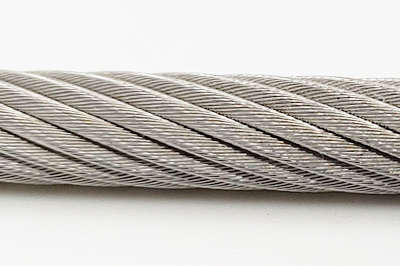

316 stainless steel cable comprises more corrosion resistance than 304, however.
Although it shares the same carbon quantity as 304 stainless steel cable, 316 stainless steel wire contains molybdenum. Molybdenum known as a passive film applied to a stainless steel cable adds an extra layer of protection from harmful environmental particles like condensation, or worse, seawater. Because even salt vapors, microscopic to human eyes, are aggressively harmful to many metals, 316 stainless steel cable’s molybdenum content prolongs the life of the cable in even the harshest of conditions.
Keep in mind however that 316 stainless steel cable, particularly in the USA, can be slightly more expensive than a 304 alternative for a couple of reasons. For one, 316 stainless steel cable’s molybdenum content means it takes more steps, effort, and time to produce. Secondly, Europe possesses a larger 316 stainless steel cable industry. Combined with lower labor costs and lower costs of raw material used to produce it, 316 stainless steel cable is a bit pricier to USA buyers than in other parts of the world, most notably, Europe.
304 vs. 316 Stainless Steel Cable Chart
| Property | 304 Stainless Steel | 316 Stainless Steel |
|---|---|---|
| Cost | Less Expensive | More Expensive |
| Carbon Content | 0.08% | 0.08% |
| Molybdenum Content | - | 2-3% |
| Corrosion Resistance | Good | Excellent |
| Other Properties | Stronger, Greater Ductility | Superior Corrosion-Resistant |
Galvanized Steel Cable
Galvanized steel cable, unlike stainless steel cable, is produced using carbon steel. Because carbon steel is highly susceptible to corrosion, especially in wet environments, the carbon steel used to produce galvanized steel cable needs a way to protect itself from hostile environments. To achieve a level of corrosion resistance, carbon steel used to produce cable is treated with a zinc coating, which is how this material earns the name, galvanized steel cable.
Starting with the cleaning of the carbon steel wire, oils, dirt, dust, and other particulates are removed from the wire. From there, a fluxing operation is executed. This operation prepares the wire to receive the zinc coating. The fluxing process ensures the zinc material adheres to the steel soundly and thoroughly. Once the steel wire has been properly cleaned and the surface fluxed, the galvanization process is begun. Dipped in a bath of molten zinc, the steel wires are completely immersed in the material and then cooled. After quality inspectors have verified the condition of the galvanization process, galvanized steel wire is the result.
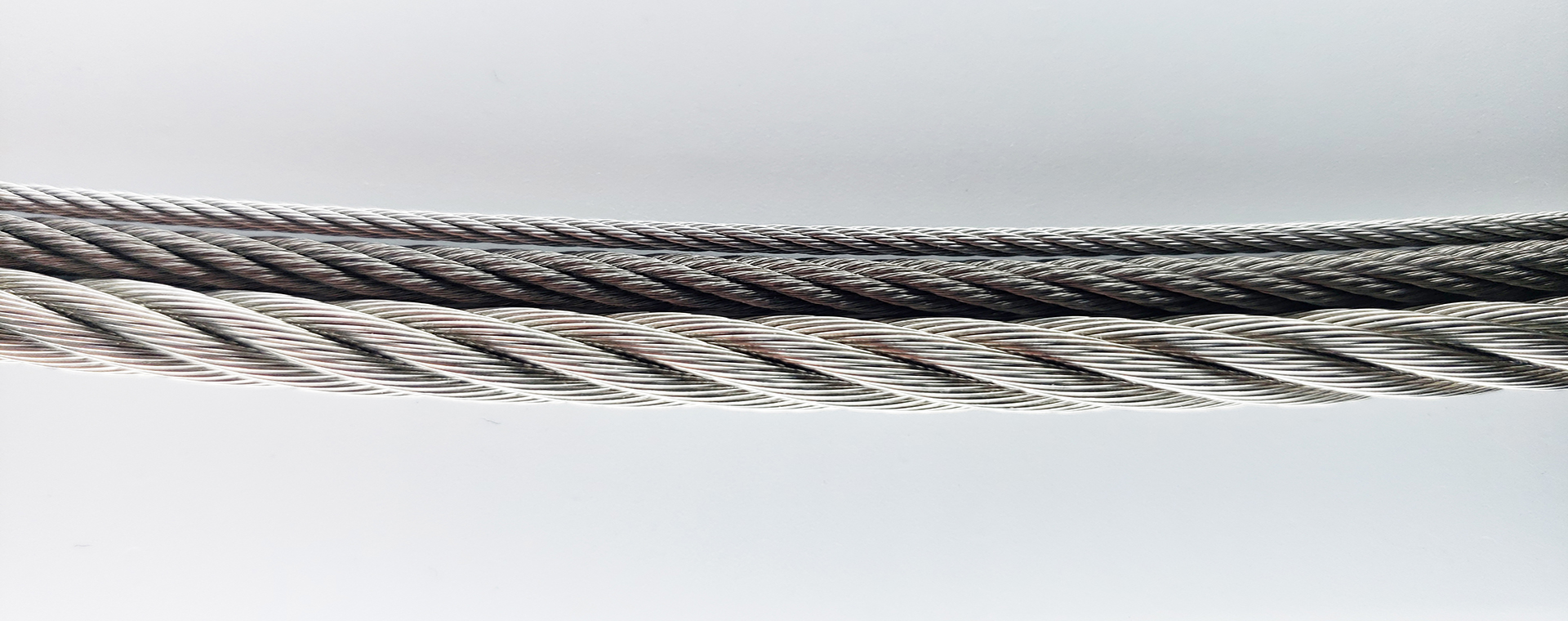

It is at this stage that the galvanized steel wire is fed into a strander, and wire rope is produced. Because galvanized steel cable is seldom produced at miniature and ultrafine diameters, this type of mechanical cable is most often known as wire rope, again, due to its finished diameter. Galvanized steel cable is not as strong as stainless steel cable, and therefore larger diameter wires are required to achieve the full-rated breaking strength of this type of cable. What’s more, the zinc coating applied during galvanization may add up to 10% more weight to the finished wire. Lastly, because the zinc coating can easily become damaged by mating components or other outside variables, galvanized steel cable is more vulnerable than its stainless steel counterparts. For these reasons, the miniature and ultrafine mechanical cable is typically produced using stainless steel.
Nevertheless, galvanized steel cable enjoys a unique couple of advantages over stainless steel cable, but like any cable, trade-offs persist. For instance, galvanized steel cable is less expensive than stainless steel cable. But it also depends upon the manufacturing operation of adding zinc to the wire, to ensure its corrosion resistance. Scratch away even the smallest amount of the zinc coating from a galvanized steel cable, and the wires are immediately exposed to the elements. Remember that absent the zinc layer applied to this brand of wire rope, the cable ceases being galvanized steel cable and becomes carbon steel cable, which will rust and corrode rapidly in harsh conditions.
Galvanized Steel Cable vs. Stainless Steel Cable Chart
| Feature | Galvanized Steel Cable | Stainless Steel Cable |
|---|---|---|
| Diameter | Typically Larger | Typically Smaller |
| Strength | Good | Excellent |
| Durability | Good | Excellent |
| Corrosion resistance | Moderate | Excellent |
| Cost | Less expensive | More expensive |
| Applications | Common in construction, agriculture, and manufacturing | Common in food processing, medical, and marine industries |
How is Steel Cable Made?
Steel wire is produced by drawing molten steel through a series of dies that reduce its size to the desired diameter and increase its strength. As the steel is drawn through the dies, the steel gets smaller and smaller by the hammering operation of the dies. The wire is then treated again with extreme heat to make it even stronger and slowly cooled. This wire drawing process causes the carbon contained in the steel to crystalize, which results in the wire meeting a defined factor of safety or break strength. From there, a surface treatment may be undertaken, which may include a galvanization process, whereby zinc is applied to the steel to make it corrosion-resistant. If not galvanized steel, other protective layers may be applied to the wire’s surface, such as chromium, in stainless steel cable examples, which provides the wire with a layer of added resistance to damaging oxidation. Once the steel wire’s strength and integrity have been thoroughly quality inspected and tested, the wire is ready for the stranding process.
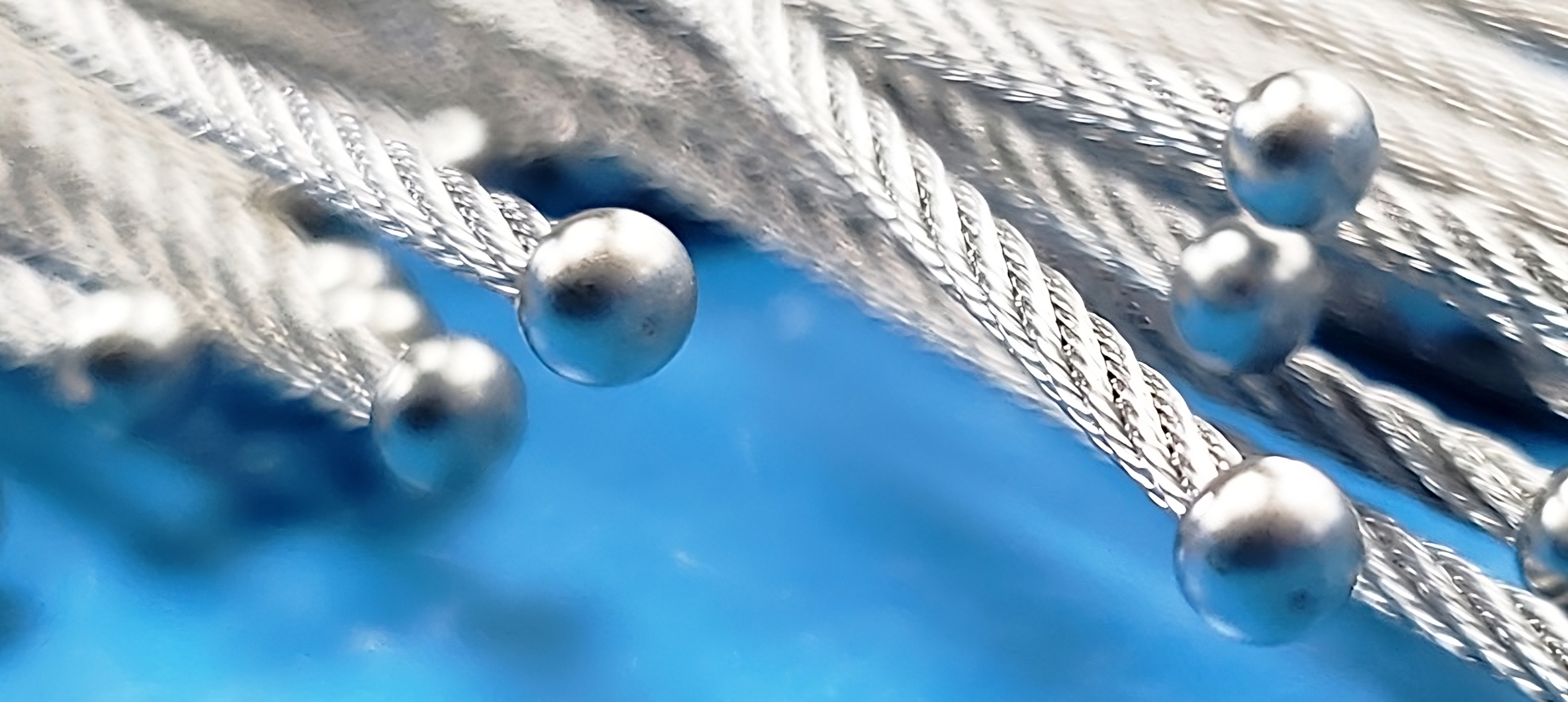

Stranding Wire into Wire Rope & Cable
The newly drawn, treated, and inspected steel wire is fed into what is known as a strander that twists the individual wires in a helical geometry until wire rope, mechanical cable, miniature, or ultrafine cable is produced.
The process of producing steel cable is one that involves determining how many wires a cable requires, in what finished diameter, and under what conditions the cable is expected to perform. Wire counts vary as often as cable diameter. For instance, some steel cables comprise merely two wires, whereas others, like those produced by Carl Stahl Sava Industries, can reach wire counts above 700. By comparison to Sava, some cable makers, like those that produce cable for massive suspension bridges, like The Golden Gate Bridge in San Francisco, can use cables comprising wire counts in the tens of thousands, with cable diameters greater than 36".


The Golden Gate Bridge • San Francisco, California
But cable wire count doesn’t only inform more obvious specifications, such as strength and cycle count. Wire count also informs flexibility too. Take, for instance, a 1x7 steel cable construction. This cable configuration comprises seven wires, six of which are helically twisted around what is known as the core wire. While not all cable configurations require a core or center wire, most do. In the case of a 1x7 cable construction, a core center wire is fed into the strander, while six additional wires are fed into surrounding holes in the strander known as guides. The strander possesses a barrel that spins at incredibly high speeds (typically between 1.1k – 5k RPMs). This spinning operation twists the wires together into their familiar helical geometry and hence, a 1x7 cable is produced.
In more complex cable constructions, such as a 3x7, the process is identical as in the 1x7 cable example, except that a completed 1x7 strand is now returned to the stranding machine, and seven more wires are counter-helically stranded around this newly produced center core. Once this second operation is completed, the process is repeated a third time, yielding the operator a 3x7 steel cable construction, which comprises 21 wires.
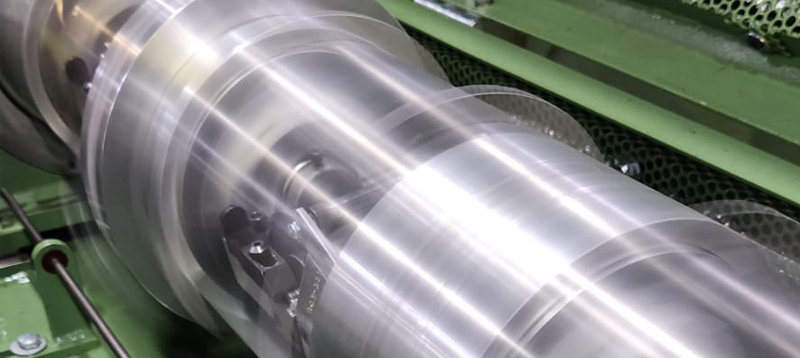

Steel Cable Flexibility
As mentioned, cable wire counts can soar, depending upon the application’s requirements. Remember, that the higher the wire count, the more flexible the finished cable becomes. Think of the human shoulder. It is the existence of many soft tissues that help facilitate the fluid range of motion in one’s shoulder. Remove a key tendon or facia, perhaps even a minor rotator cuff tear and motion would be diminished considerably. Similarly, a 1x7 steel cable construction will possess a naturally more springy physical disposition than say a 3x7, because the 21 wires contained in the 3x7 cable offer more range of motion, than the stiff, 1x7 substitute.
Steel‘s natural pliancy is what is being influenced by steel cable’s wire count. Adding wires to a steel cable’s construction means the finished cable is less likely to snap back into its natural orientation, making higher wire count steel cables more flexible around a system of pulleys or other bends. The 21 wires in a 3x7 cable construction mean the individual wires can move past one another more easily. Combined with thinner wires, let’s say ultrafine steel cables, which are more naturally pliable, translates into a more flexible completed steel cable.
Steel Cable Flexibility Chart: 1x7 vs. 3x7 Cable Constructions
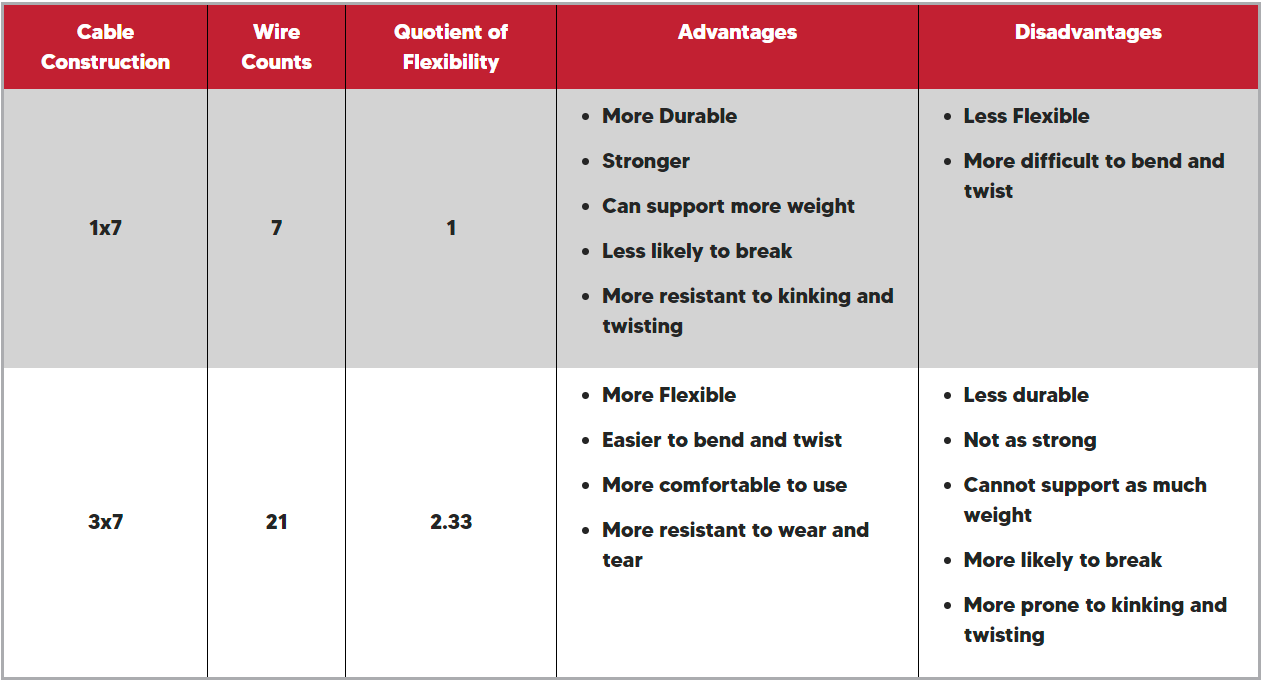

| Cable Construction | Wire Counts | Quotient of Flexibility | Advantages | Disadvantages |
|---|---|---|---|---|
| 1x7 | 7 | 1 |
|
|
| 3x7 | 21 | 2.33 |
|
|
Quotient of flexibility formula: Q = W / S, where the Quotient of flexibility is Wire count divided by the number of Strands.
Which is Best?
As always, talking to your cable production experts is the surest way to determine the steel cable material best suited to your application. Asking the engineers at Sava is therefore an essential step in your materials planning. For over 50 years now, Sava’s team of cable authorities has been producing the stainless steel and galvanized steel cable the whole world uses in surgical robots, endoscopes, military and aerospace systems, as well as countless industrial and consumer goods applications.
Let us know how we can help determine the best wire rope or mechanical cable material for you.

